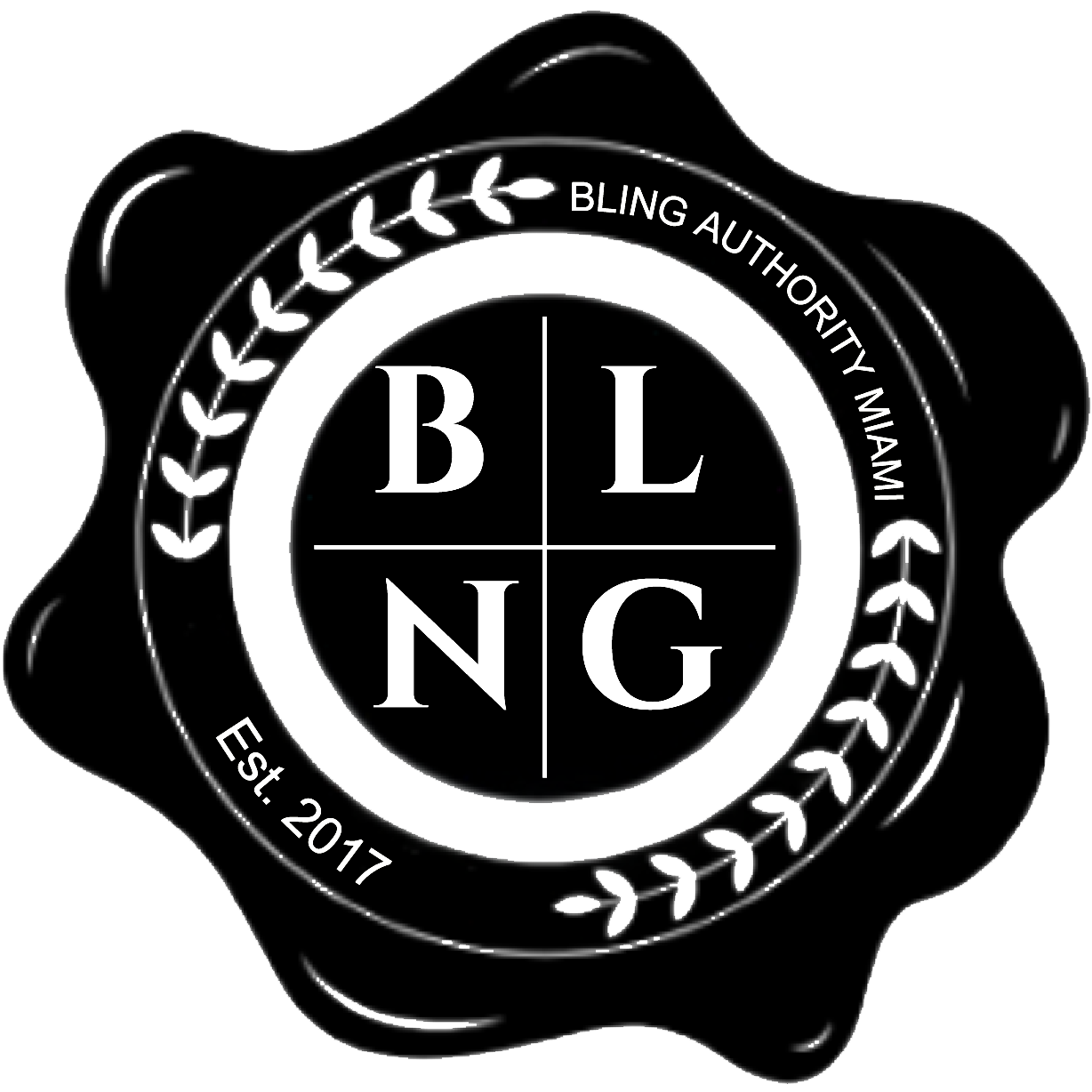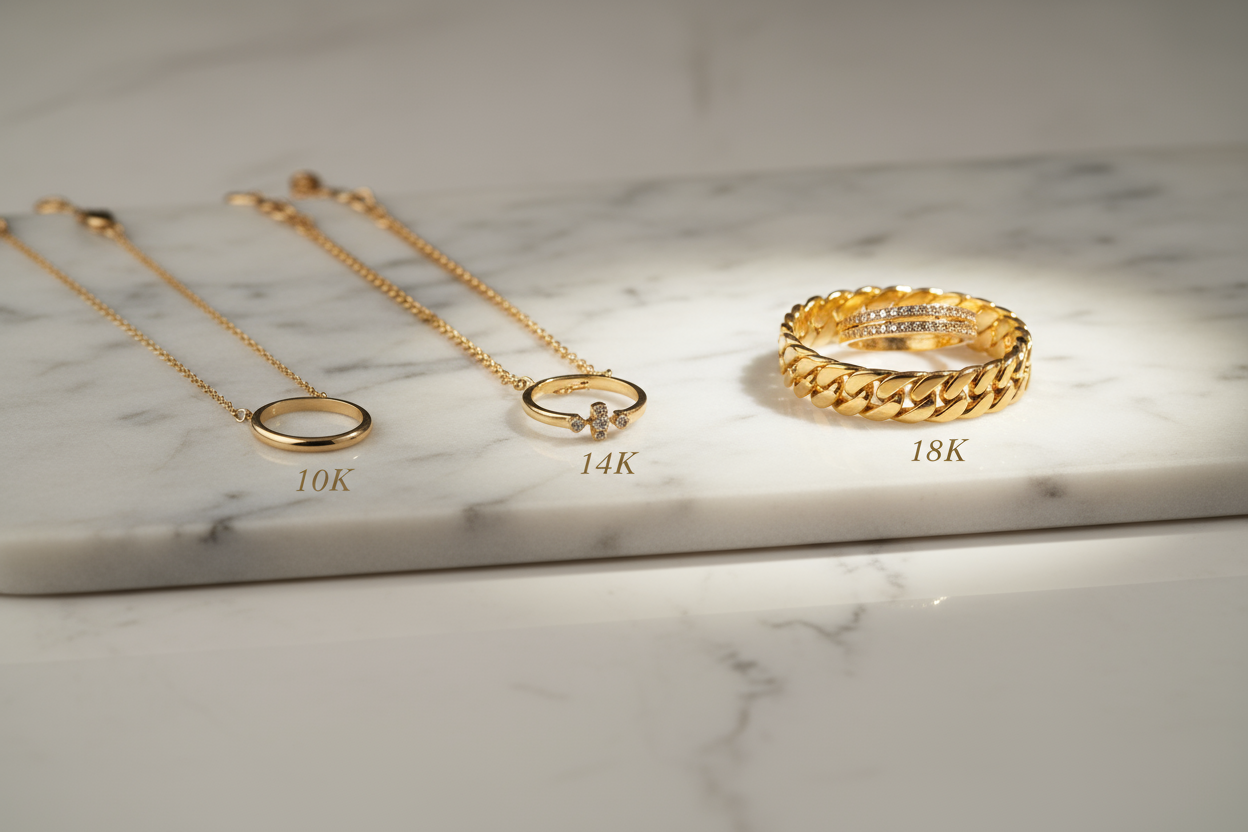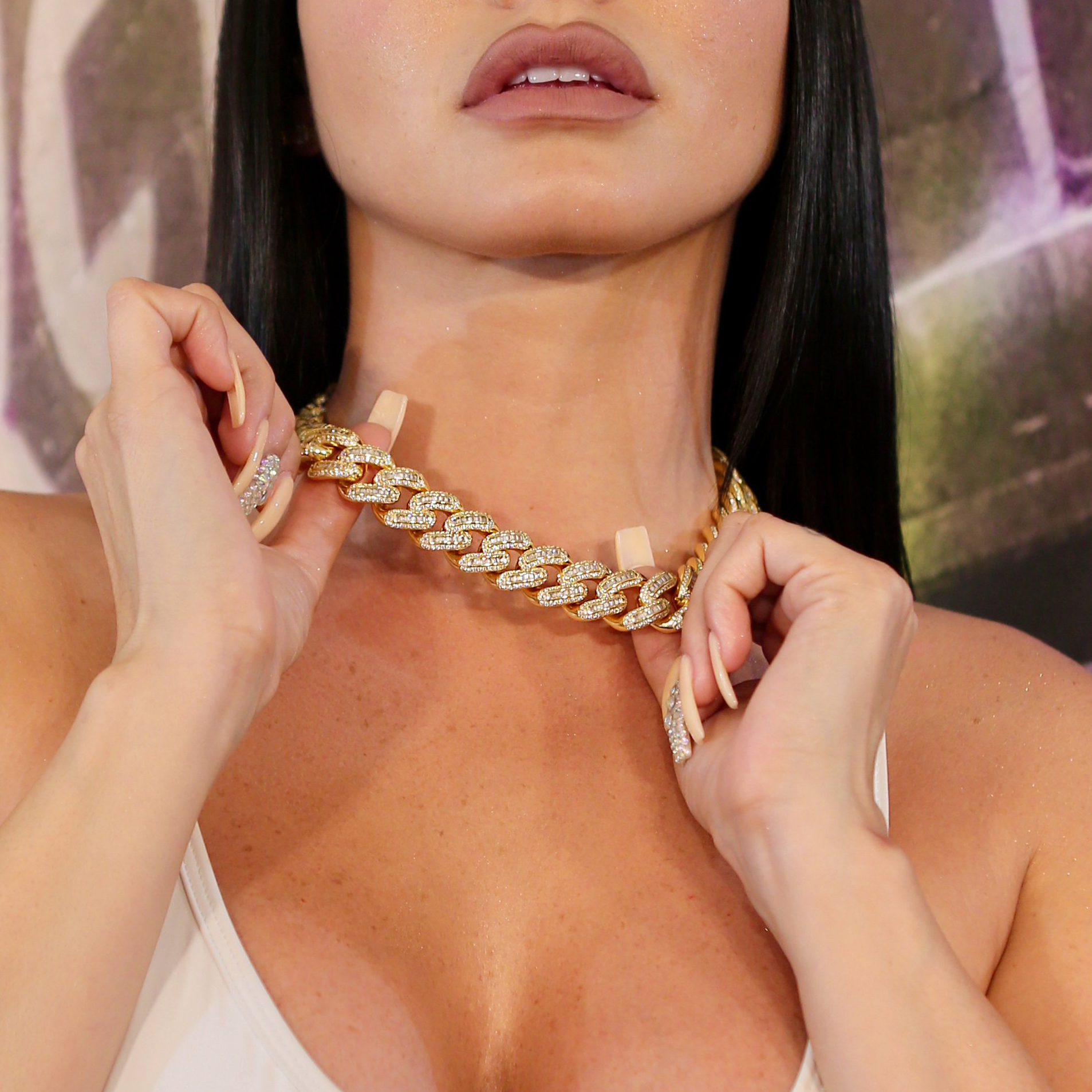10-karat yellow gold is one of the most popular materials used in jewelry today. Almost any jeweler you visit will have at least some 10K gold pieces. But is it the best choice? Here's the truth about 10K, 14K, and 18K gold—and why 18K is the superior option for anyone serious about quality jewelry.
What the Karat Numbers Actually Mean
Karat (K) measures gold purity—how much actual gold is in the alloy versus other metals.
- 24K: 99.9% pure gold (too soft for daily wear)
- 18K: 75% gold, 25% other metals (the sweet spot)
- 14K: 58.5% gold, 41.5% other metals
- 10K: 41.7% gold, 58.3% other metals (barely over the legal minimum to be called "gold")
10K Gold: The Budget Option (And Why It Falls Short)
What Is 10K Gold?
10K gold contains only 41.7% actual gold—less than half. The rest is a mix of copper, silver, nickel, or zinc. While it's technically "gold," you're getting more base metal than precious metal.
The Problems with 10K
- Pale color: Looks noticeably lighter and less rich than higher karats—lacks that luxe "gold" glow
- Lower value: Less gold content means lower resale and intrinsic value
- Potential skin reactions: Higher nickel content can cause irritation for sensitive skin
- Doesn't photograph well: The pale tone reads flat on camera compared to 18K's warmth
When 10K Makes Sense
If you need extreme durability for heavy manual work or you're on a very tight budget, 10K offers hardness. But for jewelry you actually want to wear and show off? It's a compromise you'll regret.
14K Gold: The Middle Ground (Still Not Ideal)
What Is 14K Gold?
14K gold contains 58.5% gold—better than 10K, but still less than two-thirds actual gold. It's the most common choice in the U.S. because it balances cost and durability.
The 14K Trade-Off
- Better color than 10K: Warmer tone, but still noticeably lighter than 18K
- Good durability: Harder than 18K, which sounds good—but at the cost of richness
- Moderate value: More gold than 10K, but you're still paying for a lot of filler metal
- Acceptable for daily wear: Works fine, but doesn't deliver that premium look
Why 14K Still Falls Short
14K is the "safe" choice—but safe is boring. If you want jewelry that actually looks and feels luxurious, you need more gold content. That's where 18K comes in.
18K Gold: The Superior Choice (Here's Why)
What Is 18K Gold?
18K gold contains 75% pure gold—three-quarters actual gold, one-quarter strengthening alloys. This is the sweet spot where luxury meets practicality.
Why 18K Is Better Than 10K and 14K
1. Rich, Luxurious Color
18K delivers that deep, warm "gold" tone everyone recognizes as premium. It photographs beautifully, catches light perfectly, and looks expensive—because it is. 10K and 14K can't compete with this richness.
2. Higher Intrinsic Value
More gold = more value. 18K holds its worth better than 10K or 14K, making it a smarter long-term investment. If you ever resell or trade up, 18K commands respect.
3. Better for Sensitive Skin
With 75% gold and fewer base metals, 18K is gentler on skin. 10K's high nickel content can cause reactions; 18K minimizes that risk while still maintaining durability.
4. Perfect Balance of Durability and Luxury
Yes, 10K and 14K are harder—but 18K is plenty durable for daily wear when crafted properly. The slight softness actually works in your favor:
- Better stone security: Prongs in 18K grip CZ/moissanite more reliably than harder 10K/14K, which can be brittle
- Shape retention: 18K holds intricate designs and textures better; 10K/14K can feel stiff and lifeless
- Comfortable wear: 18K has a smoother, more premium feel against skin
5. Enables White and Rose Gold Finishes
18K allows for stunning white gold and rose gold variations that 10K and 14K can't match in color quality. The higher gold content creates richer, more consistent tones.
6. The Professional Standard
High-end jewelers worldwide use 18K as their standard. It's what you'll find in luxury boutiques, designer pieces, and heirloom jewelry. There's a reason: it's simply better.
Why BLNG Uses Heavy 18K Plating (Not 10K or 14K)
At BLNG, we don't compromise. Our pieces use heavy 18K plating—up to 10x thicker than typical boutique plating—over premium core metals. Here's why we chose 18K:
- Luxe color that photographs perfectly: That rich, warm tone you want in every shot
- Long-lasting shine: Thicker 18K plating resists wear better than thin 10K or 14K layers
- Premium look at accessible pricing: You get the 18K aesthetic without solid-gold costs
- Professional craftsmanship: Our jewelers work with 18K because it's the quality standard
The Real-World Difference: 10K vs 14K vs 18K
Color Comparison
- 10K: Pale, washed-out yellow—looks cheap in photos
- 14K: Decent yellow tone—acceptable but not impressive
- 18K: Rich, deep, luxurious gold—the color everyone wants
Durability for Jewelry
- 10K: Hardest, but brittle—prongs can snap, designs feel stiff
- 14K: Good balance—but still not ideal for intricate work
- 18K: Perfect for chains, tennis settings, and Cuban links—holds shape while maintaining flexibility
Value Retention
- 10K: Low gold content = low resale value
- 14K: Moderate value—better than 10K, but still compromised
- 18K: High gold content = strong value retention and prestige
Skin Comfort
- 10K: High risk of irritation from nickel and other base metals
- 14K: Better than 10K, but still contains significant base metals
- 18K: Minimal base metals = comfortable for most skin types
When to Choose Each Karat (Honest Take)
Choose 10K If:
- You do heavy manual labor and need extreme scratch resistance
- Budget is the absolute only consideration (but you'll sacrifice quality)
Choose 14K If:
- You want a middle ground and don't mind compromising on color richness
- You're buying solid gold and need to save some cost
Choose 18K If:
- You want jewelry that actually looks and feels luxurious
- You care about color, value, and long-term quality
- You want pieces that photograph beautifully
- You're building a stack that commands respect
- You want the professional standard used by high-end jewelers
How to Style 18K Gold Jewelry
White Gold (18K)
Crisp, modern, frosty—pairs perfectly with steel watches, streetwear, and minimalist fits.
Start with:
- 3mm Tennis Chain (White Gold)
- 4mm Tennis Chain (White Gold)
- 12mm Iced Out Cuban Link Chain (White Gold)
Yellow Gold (18K)
Rich, warm, classic—the "gold" everyone recognizes. Pops with black/white fits and neutrals.
Start with:
Rose Gold (18K)
Soft, romantic, quietly luxe—flatters most skin tones and reads premium.
Width & Length Guide for 18K Pieces
- Widths: 3–4mm for clean daily looks; 12mm for bold statements
- Lengths: 50 cm (20") is the universal sweet spot; 55 cm (22") adds drop; 60 cm (24") sits relaxed over hoodies
Care for 18K-Plated Jewelry
- Wipe with a soft cloth after wear
- Apply fragrance before jewelry, not after
- Avoid pools, hot tubs, and harsh chemicals
- Store separately to prevent micro-scratches
- Quick clean: lukewarm water + mild soap → rinse → dry fully
Shop BLNG's Heavy 18K Plated Collection
- Tennis Chains — Clean sparkle with 18K richness
- Cuban Link Chains — Bold texture in premium 18K finish
- Cuban Link Bracelets — Wrist symmetry with 18K glow
- Pendants — Meaningful symbols in 18K finishes
The Bottom Line: Why 18K Wins
10K is too pale and cheap-looking. 14K is a compromise that sacrifices richness for marginal durability gains. 18K is the sweet spot—luxurious color, strong value retention, comfortable wear, and the professional standard for quality jewelry.
At BLNG, we use heavy 18K plating (up to 10x thicker than typical boutique pieces) because we refuse to compromise on quality. You get the 18K look—rich, warm, and premium—at accessible pricing, backed by professional craftsmanship and secure hardware.
If you're building a stack that lasts and looks expensive, 18K is the only choice that makes sense.






Share:
Timeless Types of Pendants That Go with Any Fit
What Are the Different Types of Gold Chain Links?